10 Best SMS APIs That Make Business Texting Easy in 2025
While traditional methods like email and phone calls still exist, more and more businesses are shifting to text messaging due to its speed and higher engagement rates.
However, choosing the best SMS API comes with its challenges. From message deliverability to integration complexity and pricing transparency, not every platform offers the same experience.
Add to that the pressure of meeting customer expectations in real-time on their phones, and it’s easy to feel overwhelmed by the options.
In this article, we’ll break down the top SMS API platforms to consider in 2025. You’ll learn what sets each one apart, what features to prioritize, and how to choose a provider that fits your specific business needs.
What Is an SMS API?
An application programming interface (API) generally provides a mechanism for software applications to communicate with one another and trigger actions.
SMS APIs allow software applications to trigger and send bulk SMS messages and can update applications based on specific responses, such as an appointment being rescheduled.
How SMS APIs Work
Your app sends a request to the SMS API with the details: local phone number, message, and any extra instructions. This is the starting point for every SMS marketing automation.
The SMS provider receives that request and processes it. This includes formatting the message correctly, checking for basic issues, and deciding how to route it.
Next, the provider selects the best route through its carrier network. Whether it’s a local customer or someone abroad, the API finds the fastest and most reliable path.
Once routed, the mobile carrier sends the message to the recipient’s device. This is the point where the SMS marketing messages actually reach the phone.
After the delivery attempt, the carrier sends a status update back through the API. Your system gets feedback like “delivered,” “failed,” or “undeliverable,” so you always know what happened.
If your setup supports two-way SMS, inbound messages go back through the API and into your system, letting you respond automatically or from your dashboard.
Many providers layer on extras like SMS scheduling, contact management, mass text messaging, link tracking, and integrations. These turn the API from a simple delivery tool into a full communication system.
Why You Should Upgrade to SMS API Technology
Sending thousands of text messages to your customers can be exhausting.
That’s where SMS APIs become invaluable to businesses of all sizes. They automate this process to make bulk messaging quicker and error-free.
SMS remains one of the best communication tools for business. It has a high open rate, with 98% of messages read within three minutes. Through SMS APIs, you can send personalized messages to increase customer loyalty and satisfaction.
If you run an ecommerce platform, you can use an SMS API to send order confirmations and delivery updates instantly.
With broad global coverage, SMS APIs allow you to send and receive SMS messages to customers anywhere, which is useful for updates, promotions, and notifications.
APIs can also automate routine communication tasks. For example, an appointment reminder system can automatically send reminders to patients to reduce no-shows. APIs also scale with your business, handling increased message volumes as your customer base grows.
10 Best SMS APIs in 2025
The right SMS API is essential if you need fast, reliable messaging to stay connected with customers. Here are the ten best SMS APIs you may consider if you’re looking for ease of integration, advanced automation, or detailed analytics.
1. Textellent
Textellent stands out as the most complete and reliable API for SMS, especially if you’re looking to do more than just send messages.

While other text messaging services focus on basic delivery or developer-heavy setups, Textellent lets you automate, personalize, and schedule messages based on real customer activity from a single API.
You can send appointment reminders, launch drip SMS campaigns, manage contact segments, and support two-way texting without needing to piece together multiple tools.
If you’re already using a CRM or scheduling platform, Textellent’s API connects to trigger messages based on customer actions.
You also get built-in compliance tools, access to real-time message data, and a developer portal that supports both technical teams and non-technical staff.
If you want a platform that doesn’t just send texts but helps you boost communication with your audience, Textellent gives you more control and smarter automation.
Sign up for a free trial or schedule a demo consultation today!
2. Twilio
Twilio is a widely used SMS API provider offering messaging capabilities across SMS, MMS, and WhatsApp messages through its Programmable Messaging API. It supports delivery to over 180 countries and includes tools for handling carrier compliance and localization.
The platform provides developer documentation, SDKs in multiple languages, and debugging tools. You can use it to send alerts, authentication codes, and marketing messages.

Image Source: twilio.com
Webhooks and delivery analytics are available to monitor message status. Twilio’s infrastructure is built to support everything from low to high message volumes.
However, users often mention the platform’s pricing as a concern, particularly at higher message volumes or when using shortcodes. Some also note that the API’s broad feature set can be difficult for new users to navigate.
3. Plivo
Plivo provides an SMS API with global messaging capabilities, supporting over 190 countries. It includes features such as long message concatenation, support for multiple character sets, MMS support, and number pooling for using localized sender IDs.
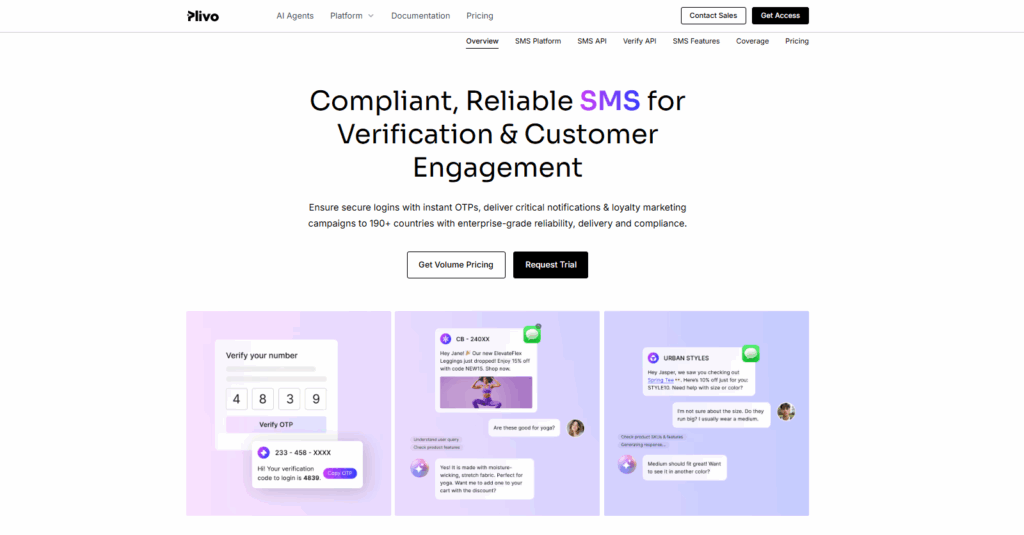
Image Source: plivo.com
The API includes REST libraries and access to Plivo High-Level Objects (PHLO), a visual workflow builder designed for non-developers.
It’s used for authentication codes, notifications, and bulk marketing messages. Plivo reports high delivery speeds, with many messages arriving in under three seconds.
However, some users report inconsistent delivery in specific regions and slower support response times. While reliable, new features are introduced at a slower pace. Compared to other tools for real-time monitoring or advanced performance optimization, they are limited.
4. Vonage
Vonage’s Communications APIs (formerly Nexmo) include an SMS API that is part of a broader messaging suite. It supports SMS, MMS, and RCS, which allows for messages that include images, video, and interactive content.
The API also supports virtual numbers and number masking, which is useful for privacy in two-way conversations without revealing personal contact details.
Vonage is commonly used for appointment reminders, delivery updates, and customer alerts. It also provides a Reports API for delivery metrics and basic engagement data.
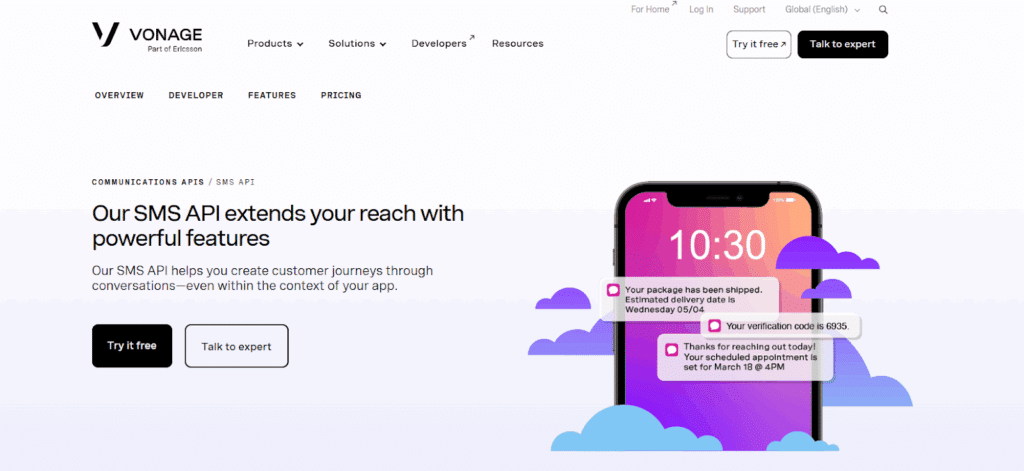
Image Source: vonage.com
However, pricing is not indicated, and for some users, it’s higher than comparable providers when managing multiple channels. The software interface is also less intuitive for new users, and the WhatsApp integration requires using a separate API or additional configuration.
5. Telesign
Telesign provides a messaging API that supports communication across multiple communication channels, including SMS, MMS, email, WhatsApp, Viber, and RCS. You can use one or all of these to connect with customers through a single integration.
The API is built for flexibility and is commonly used for account notifications, reminders, promotional campaigns, and customer service updates.
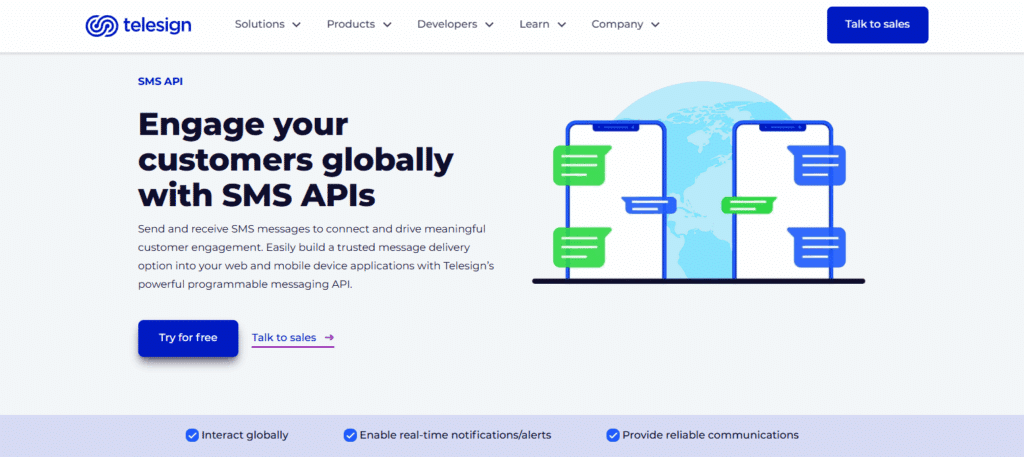
Image Source: telesign.com
Its key feature is intelligent routing, which helps choose the most reliable delivery path for messages, improves speed, and reduces the chance of failed deliveries. It also uses a fallback system that, if one route doesn’t work, the message is sent through another carrier or channel.
However, some users have pointed out that pricing can be high, especially for companies that only need basic SMS functions. There’s interest in having more customizable plans based on actual usage and needs rather than being tied to full-featured packages.
6. SlickText
SlickText is known for its focus on SMS marketing and user-friendly tools. It also offers a developer API that supports functions such as sending promotional messages, managing contact lists, and triggering drip campaigns.
You can use the API alongside SlickText’s campaign tools to build messaging solutions for customer outreach, alerts, and promotions. Advanced features include two-way messaging, auto-replies, web forms for lead capture, and list segmentation.
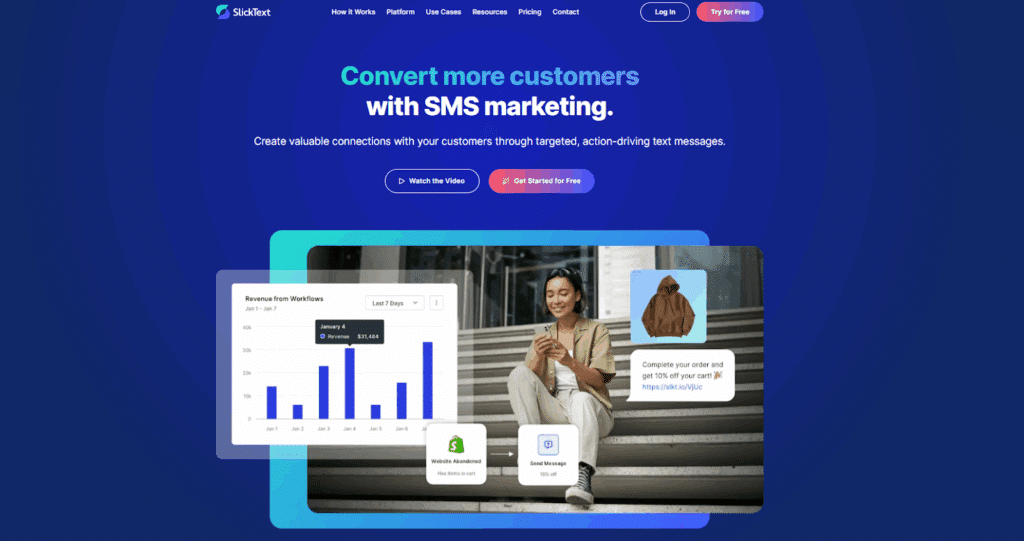
Image Source: slicktext.com
The most common concern is pricing for larger campaigns, as SlickText’s tiered plans can become costly for businesses with high message volumes. There are also occasional reports of delivery issues when sending to very large contact lists.
In terms of contact management, some users would prefer more options for labeling or organizing recipients. A few people have also mentioned delayed customer support responses.
7. ClickSend
ClickSend offers an SMS gateway API designed for easy integration into existing systems. It is commonly used to automate messages from CRMs, helpdesk platforms, and custom software.
ClickSend SMS API supports high-volume sending, two-way messaging, and multi-channel delivery, including SMS, MMS, email, voice services, and even fax.

Image Source: clicksend.com
Developers have access to RESTful endpoints and SDKs, and the service includes features like delivery receipts and webhook support for tracking message status. Typical use cases include marketing notifications, system alerts, and appointment reminders.
However, limitations in SMS templates are often mentioned, which offer only basic formatting options and can limit personalization. Automation is functional but lacks advanced workflow tools found in some marketing platforms.
Also, the reports cover delivery status but offer limited insights into access to detailed analytics such as engagement or click-throughs.
8. SimpleTexting
SimpleTexting is an SMS marketing platform that also provides an API for sending and receiving messages. The API supports SMS and MMS, with features such as keyword handling, contact list segmentation, and the use of custom fields for message personalization.
It can be used for one-time alerts and large-scale campaigns. Two-way messaging is supported, and businesses can integrate responses into external systems like CRMs or helpdesks.
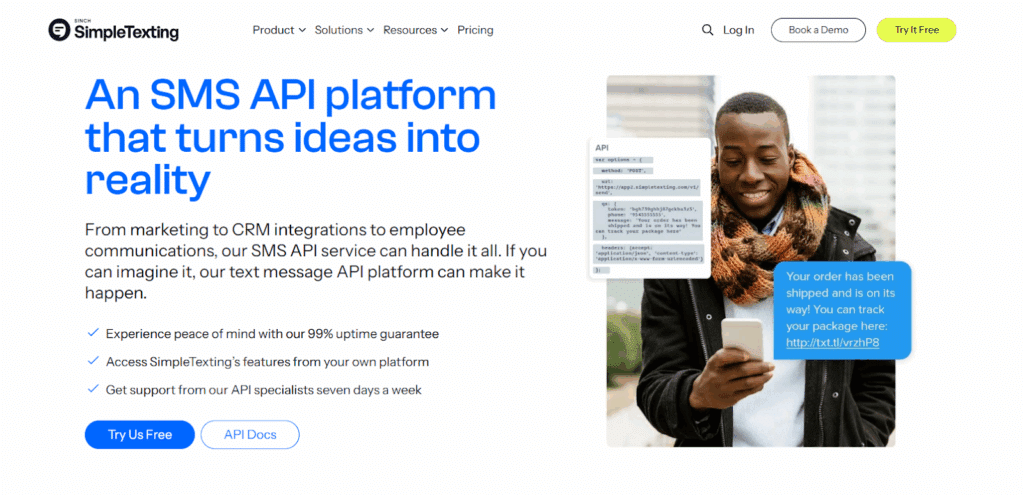
Image Source: simpletexting.com
Additional features include receiving text messages, multiple sender ID options (including long codes, toll-free numbers, and shortcodes), and built-in tools for opt-out handling and compliance tracking.
However, the platform is mostly focused on North America, and while international messaging is supported, it may not be as competitively priced or emphasized as with globally-focused providers.
A small number of users experienced delays in receiving inbound messages or notifications, particularly if they were not actively using the dashboard.
9. Bandwidth
Bandwidth offers an SMS API backed by its own network infrastructure, which gives it more direct control over message routing and delivery.
This setup allows for real-time delivery receipts and detailed status codes. It can help identify delivery issues such as carrier rejections or device-related problems.
This communication platform supports SMS and MMS and is built to handle high message volumes. It also supports 10DLC registration, which makes it easier for you to use long codes for application-to-person (A2P) messaging.
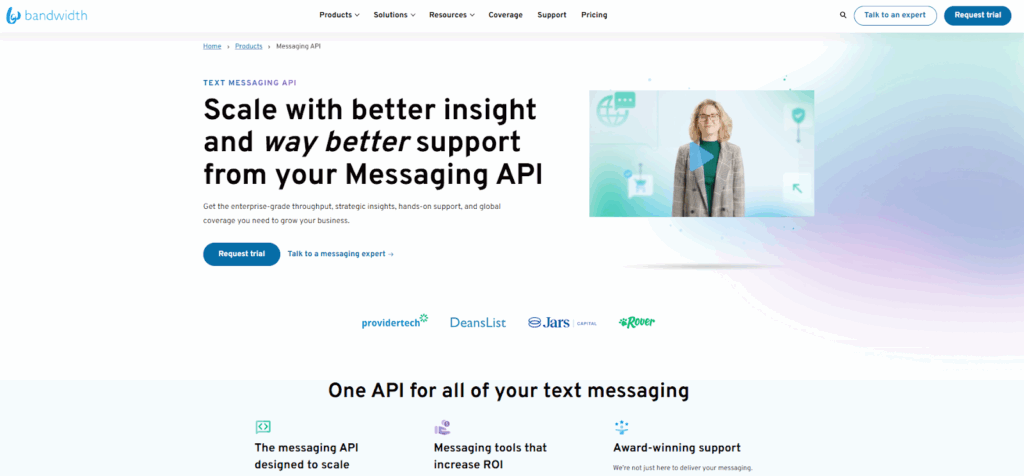
Image Source: bandwidth.com
Some users note that the platform is more technical compared to others. The web interface is sometimes described as outdated or complicated, with some mentioning the need to navigate multiple sections or logins.
While customer support is available and knowledgeable, there are occasional reports of slow responses, particularly from users at smaller companies.
Integration may also require more effort, especially when working with third-party tools, and it does not offer cross-channel messaging within the same API.
10. TextMagic
TextMagic is an SMS service used by small to mid-sized businesses. Its SMS API supports sending and receiving messages, managing contacts and templates, and scheduling recurring texts.
The platform is designed to work with both individual messages and bulk campaigns, and it supports features like auto-replies and system-triggered messages through API integration.
TextMagic offers an email-to-SMS gateway, which lets users send texts by email without additional setup. It also provides client libraries in various programming languages, as well as support for MMS attachments and sub-account management.
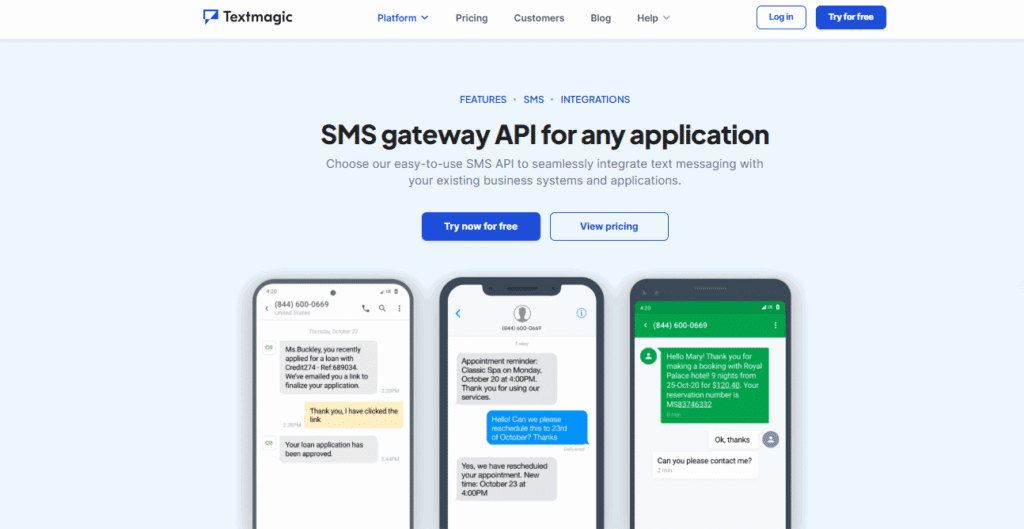
Image Source: textmagic.com
Some reviews suggest the customer service model that relies partly on external call centers may not meet expectations for more technical support needs.
There are occasional mentions of delivery or connection issues, typically related to carrier routing or integration with other platforms.
Pricing is another consideration; while the pay-as-you-go model with volume discounts works well for moderate use, higher message volumes can result in costs that are less competitive compared to other platforms.
Use Cases of SMS APIs
SMS APIs offer a versatile and practical way for businesses to speed up communication and strengthen customer interactions. They automate and simplify processes that help you stay connected with your customers. Below are a few key applications:
Marketing Campaigns
There are many ways APIs can support marketing promotions and lead generation programs as part of your broader campaign management efforts.
If you’re running an ad campaign and a prospect completes a form indicating interest in a promotion, what actions would you like to perform?
Instead of sending messages manually, you can use an SMS API to automate follow-up based on form completion. Your lead management tool could trigger an API call that sends an immediate message with more details about the offer and the next steps.
This approach helps you stay ahead by delivering real-time mass text notifications while your prospect is still engaged.
It also allows you to provide personalized communication using customer data, such as name and order history. These messages drive more customer engagement than the same text sent to every contact.
Two-Factor Authentication (2FA)
Security is essential when handling customer information. SMS APIs help you implement two-factor authentication by sending a unique code to the customer’s mobile phone during login or transaction approval.
The user then enters the code to complete the phone verification process, which helps protect accounts from unauthorized access while maintaining customer confidence.
Customer Service
Providing excellent customer service is essential for retaining customers and maintaining a positive brand image. SMS APIs can simplify customer service processes by automating the sending of order confirmations, delivery updates, and service reminders.
For example, once a customer places an order, the API can automatically instruct the SMS marketing software to send a confirmation message with the order details.
As the order progresses, additional updates can be sent, such as shipping notifications and delivery confirmations. This keeps customers informed throughout the process without requiring manual intervention from your staff.
In service-based industries, SMS APIs can be used to send appointment reminders or service updates. It reduces the likelihood of missed appointments and keeps customers engaged with your services.
If you also need to support responses, APIs that receive SMS text messages or receive SMS messages can be integrated into your systems, allowing your team to reply within your existing tools.
Internal Communication
SMS APIs aren’t only for customer-facing applications. They can also improve internal communication within your organization.
You can send urgent SMS notifications to employees, such as schedule changes, meeting reminders, or critical updates. This makes sure that important information is communicated quickly and consistently as part of your broader multi-channel communication approach.
In emergencies, SMS can be a reliable way to reach employees promptly, especially if your company doesn’t rely solely on web app tools or email for urgent messages.
Not All APIs Are Created Equal
SMS APIs are created based on the functionality offered by the SMS solution. This functionality will determine the actions and webhooks that are available to use for integration between the SMS solution and other existing software applications.
If you need to send texts like appointment confirmations, reminders, or reschedules, you need to check if the API supports them. Without this functionality, SMS automation becomes limited or requires extra manual steps to complete simple tasks.
It’s critical to think through all the use cases that may be needed in order to evaluate the API at the technical level of detail required to ensure success.
Key Features to Look for in the Best SMS APIs
Choosing the right SMS API is essential for effective communication and operational efficiency.
Whether you’re adopting a simple free sms API or a more advanced platform, it’s important to evaluate how well it can support your broader SMS strategy and long-term goals.
Here are the key features to consider when selecting the best SMS API for your business:
Reliability and Uptime
Reliability and uptime are crucial factors to consider when selecting an SMS provider and using their APIs.
You need a level of integration that makes sure your messages are delivered promptly and consistently, especially when your system depends on strong message reliability to keep customers informed.
Downtime may cause missed opportunities and frustrated customers. You need to opt for an SMS service provider with an uptime of at least 99.9%. A high uptime percentage means the service is dependable and minimizes the chances of interruptions.
If you run an ecommerce site, promptly sending order confirmations and push notifications is critical. An unreliable provider could delay these messages, leading to customer dissatisfaction and potential loss of business.
Always check the provider’s service-level agreements (SLAs) and customer reviews to gauge their reliability, particularly if you need reliable global delivery for customers across different regions.
Ease of Integration
The SMS API should be easy to integrate with your existing systems.
You should look for APIs that offer comprehensive documentation, SDKs, and support for various programming languages. It makes the setup process smoother and less time-consuming.
Detailed documentation and sample code can reduce the development time if you’re integrating SMS with your CRM system. SMS API providers that offer integration support and tools help ensure a seamless implementation process.
Responsive Customer Support
Good customer support can make integration and troubleshooting easier. Check if support is available 24/7, as issues can arise at any time.
Multiple support channels (chat, email, phone) provide flexibility in how you seek help. Fast response times are essential, especially during critical incidents or high-volume campaigns.
SMS API solutions like Textellent are known for their responsive support teams. It’s valuable when your business messaging plays a major role in customer engagement.
Scalability
As your business grows, your communication needs will increase. You have to choose an SMS API that can scale with your business, allowing you to manage bulk messaging without performance issues.
Scalability ensures that your API can handle peak loads and support future growth without compromising your core SMS capabilities.
Personalization and Customization
Personalized messages are more engaging and effective. You have to look for SMS APIs that allow you to customize messages. This includes customer data, appointment types and times, purchase history, and preferences.
This feature can improve your SMS campaigns and promote customer satisfaction by making your outreach more aligned with your messaging needs.
Why Choose Textellent as the Best SMS API Provider?
Textellent’s SMS API service provides robust capabilities for those looking to integrate SMS functionality into their applications:
- Supports interactive use of the APIs using your existing Textellent account
- Support detailed actions associated with scheduling, managing, and follow-up of appointments
- Allows you to connect your Textellent account with other OAuth2-compliant applications
- Uses an authCode sent via HTTP request header with no expiration period
- Uses both authCode and partnerClientCode sent via HTTP request header
Textellent’s Interactive API Documentation improves the integration experience. You can view the API specification in the REST API format for a detailed overview. Also, the Postman collection can be downloaded to simplify integration efforts.
What Makes Textellent Stand Out Among Other SMS API Providers
Textellent uses your existing business phone numbers to keep things familiar for your customers. This platform also allows sending images via MMS, which not all providers offer.
Their keyword functionality with both shared short codes and long codes makes sure all responses are from real phone numbers for a personal touch.
Textellent’s appointment management capabilities are more comprehensive than many standard scheduling tools. It allows a wide range of integration options with third-party scheduling applications. This is just one aspect that makes its API stand out from other providers.
For example, it allows you to collect post-appointment reviews and book follow-up appointments with ease using the API.
Textellent also excels in lead management, from generation to nurturing and follow-up by sending automated, personalized messages right when a lead shows interest.
The system tracks engagement and conversions and offers a rich template library to make it easy to create your own campaigns more effectively. It ensures you’re supporting customers throughout their entire journey with your business.
SMS API Pricing
This business texting solution offers a variety of pricing plans customized to your industry, message volume, and required features. There is no charge for using the API. Professional services are available upon request.
The plans start at $59 per month, but if you’re in the accounting and tax industry, there is a wide range of integration options available to you. For that pricing, you can use a unique calculator to estimate costs.
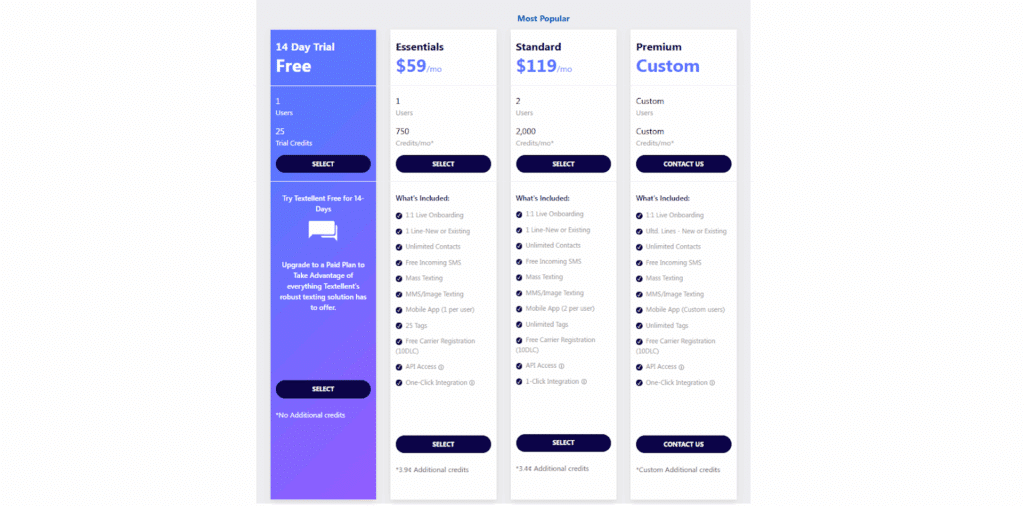
This makes Textellent accessible without complicated SMS pricing tiers or overages, especially if your usage fluctuates.
How to Implement an SMS API With Textellent
Implementing an SMS API can boost your customer communication and help you deliver better customer service. Here’s a detailed step-by-step guide to help you get started.
Step #1: Choose the Right SMS Provider and Evaluate Their API
Start by researching and selecting the SMS solution and its API that meets your business needs. Consider factors like message delivery reliability, global reach, pricing, and customer support.
Textellent provides comprehensive API documentation, including various authentication options and interactive API usage with your existing Textellent account.
It also includes a link to a Postman collection to support integration efforts. For more details, visit the Textellent Developer Portal.
Step #2: Create a Free Account
Visit Textellent’s website and sign up for free. Then, verify your account as required.
Step #3: Get API Credentials
Review Textellent’s API material and generate your API keys and tokens. These credentials are necessary for authenticating your API requests.
Step #4: Read the API Documentation
Access the API documentation provided by Textellent. This documentation will explain the various endpoints, request formats, and response formats, as well as provide code examples. Textellent’s documentation is designed to support interactive use and ease of integration.
Step #5: Set Up Your Development Environment
You need to prepare your development environment by installing the necessary software and dependencies. Make sure you have a suitable text editor or IDE and relevant libraries for making HTTP requests.
Step #6: Write the Code to Send SMS Messages
You have to write the code to integrate the SMS API into your application. Add error handling to manage potential issues like network errors, invalid input, or API limits.
Step #7: Test Your Implementation
Before going live, thoroughly test your implementation. You can send test messages to various numbers and verify their delivery. Check for common errors like incorrect API keys, invalid phone numbers, and network issues.
Step #8: Monitor and Analyze Performance
You can use Textellent’s user-friendly dashboard to monitor your messaging activities. You can review reports, delivery status, and engagement metrics. Then, adjust campaigns based on what’s working and what’s not, all within just a few minutes.
Automate Key Customer Interactions With Textellent’s SMS API!
If you’re comparing the best SMS APIs, don’t settle for platforms that only send basic messages. Textellent goes beyond simple SMS delivery and offers full-featured automation, appointment workflows, CRM integration, and real-time engagement tools.
With Textellent, you can send reminders, follow-ups, and promotional messages that feel personal. Its API allows you to schedule and trigger texts based on real actions. It has a strong SMS application programming interface that gives you more flexibility than traditional SMS tools.
You can handle replies, manage appointments, and track results through a user-friendly dashboard without the need for multiple tools. It’s everything you need to drive better outcomes, right from your existing systems.
If you’re ready to boost your communication strategy and build stronger customer relationships through text, it’s time to explore Textellent. It empowers your team to be faster, more responsive, and more personalized at every step of the customer journey.

Sign up for a free trial or schedule a demo consultation today!
FAQs About SMS APIs
Which SMS API is best?
The best SMS API depends on what your business needs. If you’re looking for full control, automation, and CRM integration, Textellent offers one of the most complete solutions.
The platform combines two-way messaging, scheduling, segmentation, and real-time triggers. It’s valuable for teams that want to access detailed analytics to optimize campaigns and track customer engagement.
For developer-heavy use cases or high international reach, options like Twilio or Plivo are commonly used. However, many businesses prefer a balance of usability, automation, and support, which is where Textellent stands out.
Is text blasting illegal?
Text blasting can be illegal if it violates regulations like the Telephone Consumer Protection Act (TCPA) or carrier guidelines. You must obtain proper consent, provide opt-out options, and follow SMS compliance rules to avoid penalties.
Reputable SMS platforms also help prevent issues like fraudulent traffic or abuse, including patterns associated with SMS pumping fraud.
Who is the best SMS provider?
The best SMS provider for you will depend on your message volume, feature requirements, and how you plan to integrate messaging into your workflows.
Providers like Textellent are built with business use in mind, offering direct integration with CRMs, built-in compliance tools, and SMS automation features.
If you’re after a more general-purpose, code-first platform, Twilio, Vonage, or Plivo might also meet your needs. Look for one that aligns with your goals rather than just your budget.
How do you choose the right SMS API?
Start by identifying how you plan to use SMS, like alerts, reminders, marketing campaigns, or customer service. Then, evaluate the following:
- Does the API support two-way messaging?
- Can it schedule and automate messages?
- Does it integrate with your existing tools (like your CRM)?
- Are there tools for managing compliance (like opt-outs)?
- How clear and usable is the API documentation?
When reviewing features, consider whether the provider supports multimedia messaging for richer content, accurate handling of error codes, and tools for gathering insights through SMS surveys.
If you want all of these in one package, Textellent is built specifically for business users who need both automation and simplicity.


